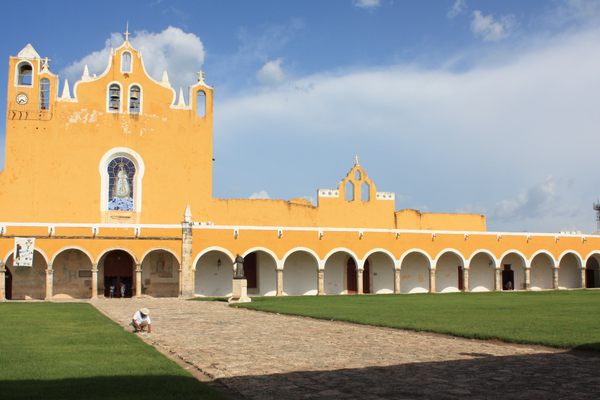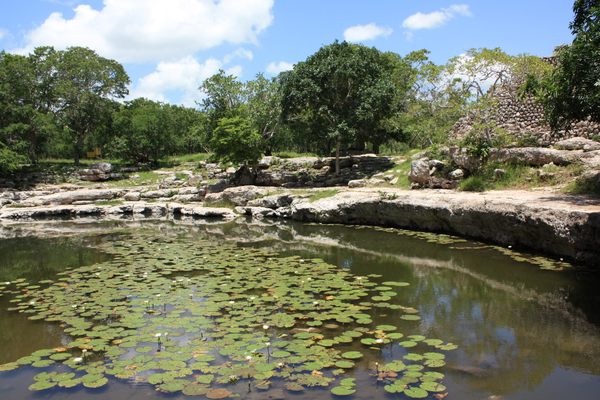Cuzamá Cenotes
Three sinkholes filled with warm, crystal-clear water reached by a horse-driven cart on an old train track through the jungle.
To the ancient Mayans, the teeming landscape of the Yucatán was the residence of the gods, who had direct influence over human affairs. Perhaps none of the area’s features was of more sacred importance than the cenotes, the distinct Yucatán sinkholes where the ancients believed it was possible to commune with the rain god Chaac.
Some 6,000 of these cenotes, whose name derives from the Mayan ts’onot, cover the peninsula, an abundance partially owed to the geological impact of the dinosaur-destroying Chicxulub asteroid that hit the area 65 million years ago. Mayan settlements were typically established in the vicinity of cenotes, for both practical purposes, namely a water source, and ritual purposes, such as sacrificial offerings to Chaac and calculation of harvests.
The Cuzumá cenotes are actually located in a remote jungle area a considerable distance from the idyllic town. Getting there is half the fun. From the roadside parking area, access to the cenotes is restricted to a ride on a horse-driven Decauville train track system. Here is a remnant of the henequen (agave rope) industry that briefly made nearby Mérida one of the wealthiest cities in the 19th-century world. Now the ghost rails that once hauled the “green gold” of the Yucatán to the ports of Mexico lug sweaty tourists to the cenotes.
Cenotes Chelentún, Chansinic’Ché, and Bolón-Chohol, roughly translated as “lying stone,” “ant tree,” and “bat hole,” are all known as “cántaro” style cenotes. The word describes cavern-like cenotes with an entrance narrower than the width of the water below. The most impressive of the three is the massive Bolón-Chohol, something of a naturally sculpted dome cathedral of water, rock, and vine. Once the 50-foot vertical ladder climb into apparent blackness is cleared, crystal blue waters, illuminated by a small hole in the ceiling, stretch out like a glass floor. Thirsty tree roots dip down from the dome-like ceiling for a drink; they mingle with tooth-like stalactites. It’s hard not to join the Mayans in imagining this as a dwelling place of the divine.
Cenote Chelentún is the smallest, shallowest of the three, and should take up the least of a visitor’s time. Chansinic’Ché, however, is almost as impressive as Bolón-Chohol, and its waters are comparably as deep and blue. Cenotes stay the same general temperature all year—in the 70s Fahrenheit (around 21 to 26 degrees Celsius)—so visitors can enjoy them even in winter.
Know Before You Go
Cuzamá is technically reachable by a 1.5-hour bus journey that departs from the Noreste terminal in Mérida, but travel by car is recommended. The cenotes are open daily from 8:00 a.m. to 5:00 p.m.; the last cart leaves the departure point at 3:30 p.m. Early arrival is recommended for those who don't wish to share the water with others. The price for a ride on the cart, which carries four people, is posted various internet resources as 300 pesos, but recent experience found it to have been raised to 400 pesos. Note that only natural sunscreen and bug repellent is allowed in the cenotes. Plastic bags for cell phones and cameras are recommended.
























Follow us on Twitter to get the latest on the world's hidden wonders.
Like us on Facebook to get the latest on the world's hidden wonders.
Follow us on Twitter Like us on Facebook